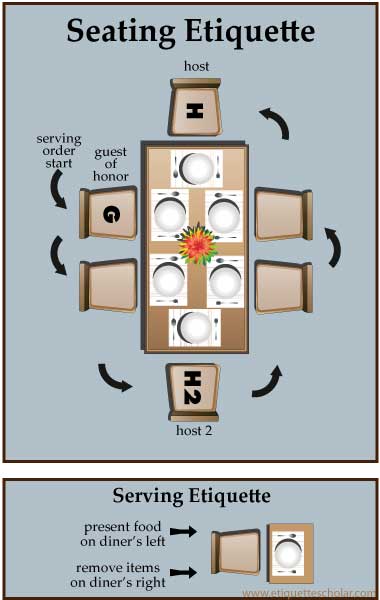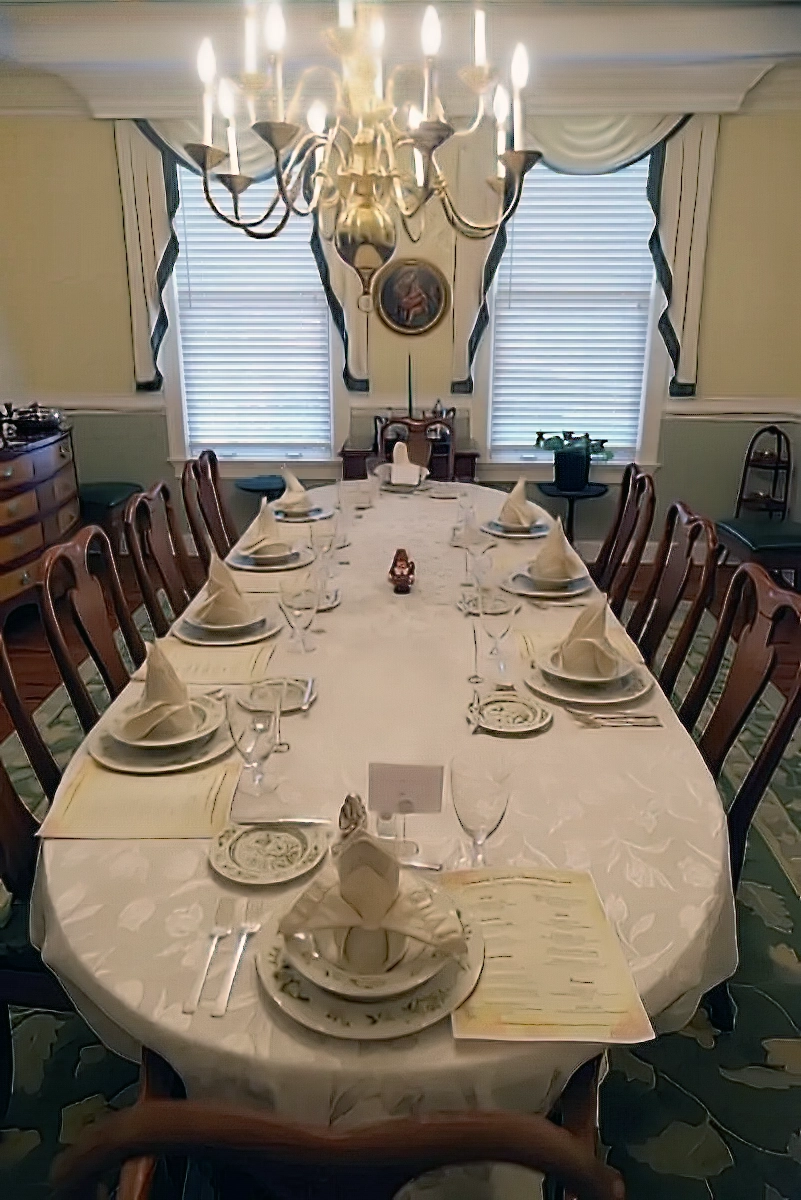Etiquette – When you are hosting guests for dinner, here are the top four focus areas. Number four, a welcoming host, is the MOST important. It can be difficult sometimes due to the stress of hosting guests, but remember, your guests are there to see you and would much rather have a happy and welcoming host than anything else. So, relax and have fun! Oh, if it is a casual or less formal gathering, there is nothing wrong with inviting your guests to assist. Not so with a formal meal. If you are stressed, hiring a caterer or professional servers is perfectly reasonable for formal meals.
- A well-planned menu.
- A table with ironed linen, polished silver, and sparkling glassware.
- Well-prepared food.
- A welcoming host.
The Menu
Plan a well-balanced meal. Don’t serve heavy, sweet, or spicy dishes back to back. Balance rich dishes with simple ones.
Light foods, such as main-course salads and cold soups, are good choices in the summer.
Heavy foods, such as stews and roasts, in winter.
The Drinks
Two or three varieties of cocktails should be offered:
- Wine
- Liquor
- Soda, Juices, and Sparkling Water
Guests should be given enough time to have a couple of cocktails.
You may serve light snacks or hors d’oeuvres with drinks. They should have compatible flavors with the food to be served at dinner.
Serving Dinner
When dinner is ready to be served:
- Have the table prepared. The candles should be lit and water glasses filled.
- If possible, have the first course on the plates before guests arrive at the table (but not if it is a hot dish).
- For a small group, announce: “Dinner is ready; shall we go in?”.
- Ask a few friends for large groups to help guide the guests to the dining room.
- Lead the way to dinner.

Order of Service
The guest of honor seated on the host’s right always serves each dish first. If there is serving help, servers move around the table counter-clockwise from her, serving the host last. When food is served directly from the kitchen, service is counterclockwise from the host’s right, with the host served last. Plates are served from the guests’ left side and removed, if possible, from the right.
Dishes are passed counter-clockwise to the right and should be passed in the same direction.
A guest helps himself to the bread basket with his fingers and lays the roll or bread on his butter plate.
If there is a choice of two or three sauces or other condiments, placing them together in a divided dish or on a small, easily managed tray ensures they are passed together.
Second Helpings
If you have a sideboard or serving table, use it as a halfway station between the dinner table and the kitchen. You can have plates for the next course and extra flatware on it.
After being passed, the serving dishes can be left on the serving table on a warming tray or taken to the kitchen and kept warm on the stove.
When you see that guests are ready for another portion, get up, get the serving bowl, and pass it around.
Dessert may be served already placed on individual dessert plates, or the hostess may serve it at the table.
Clearing the Table
When the table is cleared, dishes are removed two at a time, never stacked. Salt-and-pepper containers and condiment dishes are also cleared.
Salad plates and those used for the entree are removed before dessert is served.
Bring dessert plates or whatever is needed for the next course when you return from the kitchen to accelerate the clearing process. Or have a friend serve the dessert while you finish clearing.
Any salt-and-pepper shakers, unused flat silver, and dishes of nuts are taken off (on a serving tray, if you like).
To guests who offer to help you clear, say, “No, thank you, really it is easier to do it myself”-or you may find that everyone is suddenly on his or her feet and in the kitchen. It’s better to designate a serving and cleaning buddy in advance to help.
After-dinner Coffee
After-dinner coffee may be served at the dining table or in another room where the diners have moved.
The hostess pours the coffee at the dining-room table or from a tray carried to the living room or den.
After-dinner Drinks
If coffee is served at the table, bottles of after-dinner drinks may also be placed on the table.
If coffee is served in the living room, a tray containing bottles and glasses is placed on the coffee table.
